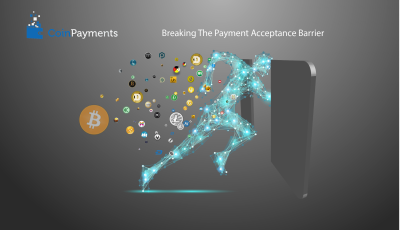A Little Altcoin Sanity: Counterparty
 Counterparty (ticker XCP) is an interesting addition to the Bitcoin protocol, that serves as “an innovative platform for peer-to-peer markets and financial instruments.” In other words, it can be used (similar to NXT) in order to issue assets in a controlled, verifiable, and public manner. It can also be used to create new markets, and to facilitate their exchange. For instance, Overstock.com CEO Patrick Byrne very recently began working with Adam Krellenstein, the Counterparty developer, to issue shares of Overstock using the XCP protocol. Quite an impressive development — and the coverage the move has received is similarly interesting. Before I continue, though, the Counterparty specs:
Counterparty (ticker XCP) is an interesting addition to the Bitcoin protocol, that serves as “an innovative platform for peer-to-peer markets and financial instruments.” In other words, it can be used (similar to NXT) in order to issue assets in a controlled, verifiable, and public manner. It can also be used to create new markets, and to facilitate their exchange. For instance, Overstock.com CEO Patrick Byrne very recently began working with Adam Krellenstein, the Counterparty developer, to issue shares of Overstock using the XCP protocol. Quite an impressive development — and the coverage the move has received is similarly interesting. Before I continue, though, the Counterparty specs:
– No mining, Blockchain runs on top of Bitcoin
– 2.6 million XCP created at inception
– Developed by Adam Krellenstein
– Wiki
– Coins distributed through Proof-of-Burn (!)
XCP is, at first glance to those familiar with the altcoin world, a different beast entirely. Really though, what is it?
I think the simplest analogy is to conceptualize it as a mixture between Ripple and NXT. NXT is its own entire ecosystem, while Counterparty relies on Bitcoin to function. Similarly, while Ripple IS its own ecosystem, the purpose of its ecosystem is to facilitate the reliable transition between various currencies — it’s an ecosystem consisting entirely of bridges between other ecosystems, in a way.
Counterparty is designed to bridge the physical world and the digital world. It’s designed to bridge the old, closed financial system, and the new, open financial system. And it is doing a fantastic job, given the news from Overstock. A major company like that embracing the “add-on” of a new and disruptive technology, less than a year after its development? Yeah, that’s quite a statement.
Similar to Ripple and NXT, all XCP in existence were created at once. Unlike Ripple, and like NXT, the distribution was fair. Let’s dig a little bit into the Proof-of-Burn that created XCP.
A total of 2100 BTC was sent to an inaccessible address designated for Counterparty investments. Any Bitcoin sent to it is gone, forever. It can’t be accessed. The reason for this is obvious from the address itself: 1CounterpartyXXXXXXXXXXXXXXXUWLpVr.
Bitcoin addresses are generated randomly — you can game the system to sometimes pick the first 5 or so characters, but generating that string would be completely unreasonable. As such, the private key is completely unknown, and so the coins are inaccessible. Destroyed.
This destruction is the source of the Counterparty distribution. As such, it was a fair distribution — to each what he put in. But there’s always been a nagging question about it, at least to me.
What’s the point? Those coins are gone now. This isn’t like a capital investment — where the capital is used to give strength to the project. This is the equivalent of burning a pile of hundred dollar bills, and then printing new bills. It’s incorrect to say that the burnt hundreds are the value which form the base of the new bills. It doesn’t work that way — the only thing burning the hundreds did was destroy value (and create value by deflation, for others). The burned Bitcoin used in Counterparty are just gone. They should not be considered whatsoever in its valuation — anything else is nonsensical, emotional consideration. This is an economic question, where that has no relevance.
What the burn DOES do, though, is show two things. First, it shows the strength of resolve of those who invested. By throwing away all of that money, they committed themselves to building something significant as a group. It created a sense of togetherness (read: group sunk cost and desire for gain) that has undoubtedly helped the Counterparty community to build something great. Second, it gives a proof of fair distribution — everyone knows that the coins were distributed fairly, in what essentially amounts to an IPO. Counterparty IPO’ed at a valuation of ~1.6MM USD. Today, the XCP in existence is worth approximately 5.5MM USD. So they’ve done quite well, you could say.
Moving forward, I anticipate Counterparty to continue to see success — Overstock’s decision to issue assets using it is a great push in the correct direction, that will help them to establish a sort of first-mover advantage. I think it’s likely we will see Counterparty, the NXT Asset Exchange, and likely one other (there are plenty of options — Blackcoin, Dogeparty, etc.) compete for the spot of “best” asset-issuance platform.
The most likely development from there should be obvious: a platform will be built which “reads” and interacts with all the asset-issuance platforms, to create a centralized hub for digitized asset exchange. The question of valuation for Counterparty, then, is a question of how successful its competitors are. This is a very large marketplace, with huge (and to some extent, incalculable) potential.
There are a number of competitions brewing in cryptocurrency. The “gold” is mostly settled — that’s Bitcoin. If there will be a silver — a secondary asset, held and accepted — which coin it will be is yet unknown. The common currency of exchange, that is also unsettled — it could be Bitcoin, if transaction fees can stay low enough. Asset issuance platform is a fourth unknown to add to the pile. Counterparty is winning, but you can’t call a race in the first portion of the first lap.
Image via Counterparty Wiki












